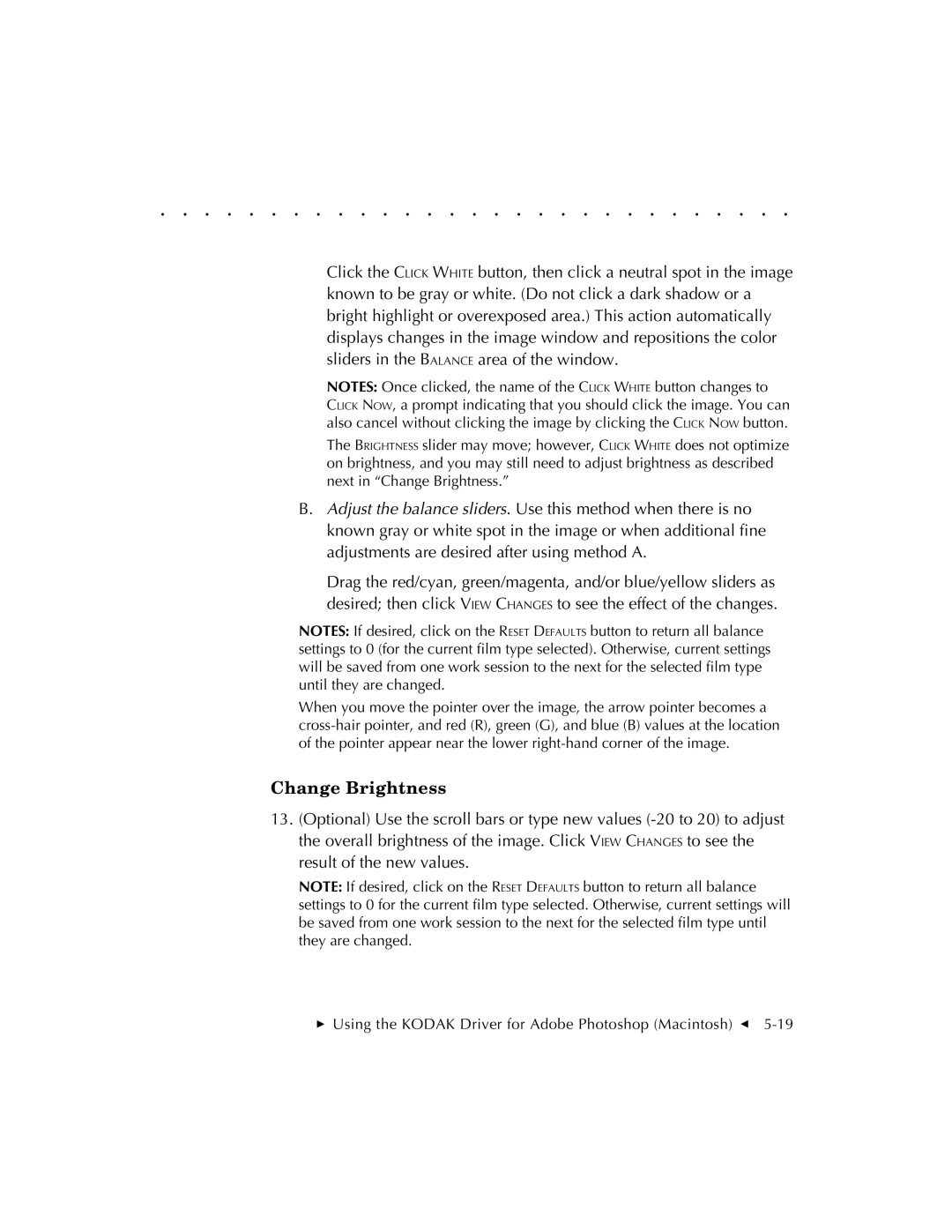. . . . . . . . . . . . . . . . . . . . . . . . . . . . .
Click the CLICK WHITE button, then click a neutral spot in the image known to be gray or white. (Do not click a dark shadow or a bright highlight or overexposed area.) This action automatically displays changes in the image window and repositions the color sliders in the BALANCE area of the window.
NOTES: Once clicked, the name of the CLICK WHITE button changes to
CLICK NOW, a prompt indicating that you should click the image. You can also cancel without clicking the image by clicking the CLICK NOW button.
The BRIGHTNESS slider may move; however, CLICK WHITE does not optimize on brightness, and you may still need to adjust brightness as described next in “Change Brightness.”
B.Adjust the balance sliders. Use this method when there is no known gray or white spot in the image or when additional fine adjustments are desired after using method A.
Drag the red/cyan, green/magenta, and/or blue/yellow sliders as desired; then click VIEW CHANGES to see the effect of the changes.
NOTES: If desired, click on the RESET DEFAULTS button to return all balance settings to 0 (for the current film type selected). Otherwise, current settings will be saved from one work session to the next for the selected film type until they are changed.
When you move the pointer over the image, the arrow pointer becomes a
Change Brightness
13.(Optional) Use the scroll bars or type new values
NOTE: If desired, click on the RESET DEFAULTS button to return all balance settings to 0 for the current film type selected. Otherwise, current settings will be saved from one work session to the next for the selected film type until they are changed.
